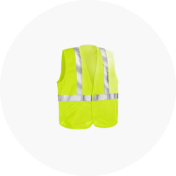Color-coded hard hats are an essential safety measure on construction sites and other high-risk workplaces, promoting safety, communication, and efficiency. By assigning specific colors to different roles, workers can quickly identify who is responsible for what, enhancing coordination and ensuring safety protocols are followed.
Common Hard Hat Colors and Their Uses:
- White: Worn by supervisors, managers, engineers, and foremen to signify authority and leadership.
- Yellow: Assigned to general workers and heavy equipment operators, representing non-specialized workers.
- Blue: Worn by skilled trades and technical workers, such as electricians and carpenters, and sometimes safety officers or site inspectors.
- Green: Used for safety officers and new workers, such as trainees, representing safety and environmental roles.
- Red: Designated for emergency response personnel, like fire marshals or safety responders.
- Orange: Used by road crews and workers in high-visibility roles, including traffic controllers.
- Brown: Worn by welders and workers involved in heat-related tasks.
- Gray: Typically worn by visitors or temporary workers who are not part of the regular workforce.
- Pink: Often used for non-standard roles or by visitors who do not have a designated color.
Benefits of Color-Coded Hard Hats:
- Improved Communication: Color-coding makes it easier to identify roles and responsibilities on a busy worksite, helping to streamline communication and reduce confusion.
- Enhanced Safety: Quick identification of safety officers or emergency responders allows for faster action in critical situations. The use of high-visibility colors reduces accidents, especially in low-light conditions.
- Compliance with Regulations: Many worksites require color-coded helmets to meet safety protocols and ensure that only qualified personnel perform specialized tasks.
- Increased Efficiency: Color-coded hard hats facilitate better workflow and coordination, reducing downtime and improving collaboration among teams.
- Visitor Identification: Identifying new workers and visitors through distinct colors enhances safety, as these individuals may need additional guidance or supervision.
- Professionalism: A standardized color-coding system reflects a company’s commitment to safety and professionalism, fostering a well-organized, efficient, and safe work environment.
Incorporating color-coded hard hats and safety vests can significantly improve site coordination, compliance with safety protocols, and overall worker safety. Whether you're managing a construction site or simply navigating a new work environment, understanding and adhering to color-coded safety gear practices is vital to maintaining a secure and efficient workplace.
Need the right head protection for your job site? Browse our range of top-quality hard hats, available in various colors, styles, and brands, to ensure your team stays protected and coordinated!










